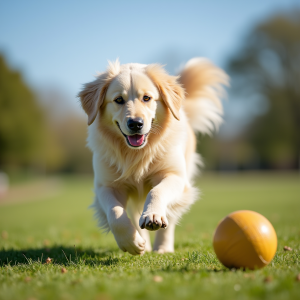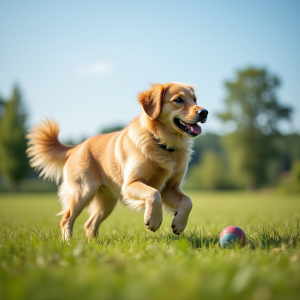7 Amazing Facts About the Long Haired Labrador Retriever
When you think of a Labrador Retriever, you likely imagine a loyal, friendly dog with a short, dense coat. But what if you’ve seen a Labrador with longer fur and wondered, “Is that a long haired labrador retriever?” The internet is flooded with images and discussions about long haired labrador retriever, but are they real? Or is it just a myth?
In this article, we’ll dive deep into the question of whether long-haired Labrador Retrievers really exist. We’ll explore the myths surrounding these rare-looking dogs, uncover the genetics behind coat length in Labradors, and separate fact from fiction. By the end, you’ll have a clear understanding of whether long-haired Labradors are a true phenomenon or just a misunderstanding.
Table of Contents
The Origin of the Labrador Retriever
Before we explore the possibility of long haired labrador retriever, let’s take a moment to understand where the breed comes from and what coat types are standard for Labradors.
A Brief History of the Labrador Retriever
Labrador Retrievers were firstly bred in Newfoundland, Canada, as working tykes. They were used by fishermen to retrieve fishing nets and catch fish that escaped from hooks. Over time, the breed was developed in the United Kingdom, where it gained popularity as a hunting companion and family dog. Today, Labradors are among the most beloved and popular breeds in the world, known for their intelligence, trainability, and friendly disposition.
Standard Coat Types for Labradors
According to the American Kennel Club (AKC), the Labrador Retriever has a “short, dense, water-resistant coat” that helps it excel in water retrieval tasks. This double coat consists of a soft, insulating undercoat and a coarser, water-resistant outer coat. The coat is designed to keep the dog warm in cold water and protect it from the elements while working.
The breed comes in three main colors: yellow, chocolate, and black. These color variations don’t affect the coat’s length, as all Labradors are known for their short fur.
What is a Long Haired Labrador Retriever?

So, what exactly is a long haired labrador retriever? The term “long-haired” might be misleading when it comes to Labradors. There’s no official category for long-haired Labradors in the breed standard, but some dogs may appear to have longer fur.
Appearance of Long Haired Labradors Retriever
In most cases, Labradors with longer fur actually have a slightly longer than average coat length, especially around the neck and tail. However, they don’t have the flowing, full coats that are seen in breeds like the Golden Retriever or the Afghan Hound. If you’ve encountered a Labrador with long fur, it’s likely due to a rare genetic variation or crossbreeding.
A truly long haired labrador retriever would have noticeable differences in fur length, such as:
- Longer fur around the neck, back, and legs.
- A thicker tail with more feathering.
- Fur that appears fuller and fluffier than a typical Labrador’s short coat.
Genetic Factors Behind the Coat Length
The key to understanding the long coat in Labradors lies in genetics. Labrador Retrievers typically inherit short coats due to a dominant gene for short fur. However, some rare genetic mutations can lead to a longer coat. These mutations can cause the fur to grow longer than usual, especially in certain areas like the neck, tail, and legs. While this is a natural occurrence, it is extremely rare in purebred Labradors.
In addition to natural mutations, long coats in Labradors could also be the result of crossbreeding with other long-haired breeds, such as the Flat-Coated Retriever or even the Golden Retriever. The genes for long coats could have been passed down, causing the appearance of a longer coat.
The Myths Behind Long Haired Labradors Retriever
There’s no denying that long-haired Labradors are a point of fascination, but there are many myths surrounding them. Let’s take a look at some of the most common misconceptions.


Myth 1: Long Haired Labradors are Not Purebreds
One of the most common myths is that long haired labrador retriever are not purebred. While it’s true that long coats are not typical of the breed, they can occur in purebred Labradors due to rare genetic mutations. These Labradors may look different, but they are still part of the Labrador Retriever breed.
Myth 2: Long Haired Labradors are a Separate Breed
Another misconception is that long-haired Labradors are a completely different breed. Some people may confuse them with breeds that resemble Labradors but have longer fur, such as the Flat-Coated Retriever. However, these breeds are distinct and have different traits. A long-haired Labrador is still genetically a Labrador Retriever, even if it has an atypical coat.
Myth 3: Long Haired Labradors Are Healthier Than Short-Haired Labradors
While some people believe that long-haired Labradors are healthier due to their thick coats, this isn’t necessarily the case. Health issues in Labradors, like hip dysplasia or heart conditions, are unrelated to coat length. The coat type doesn’t impact the overall health of the dog; it’s more about genetics and responsible breeding practices.
The Genetics of Coat Length in Labradors
Now that we’ve debunked some myths, let’s dive deeper into the genetics behind coat length in Labradors. Understanding how coat length is inherited can shed light on the possibility of long-haired Labradors.
The L Gene and Coat Length
The coat length of a Labrador is determined by its genes. There is a specific gene, known as the L gene, that controls the length of the coat. The short-haired coat, which is the standard for Labradors, is the result of a dominant gene. This means that if a Labrador inherits one short-haired gene, it will have a short coat.
However, in rare cases, the Labrador may inherit two copies of the long-haired gene, resulting in a dog with longer fur. This is a recessive trait, meaning both parents must carry the long-haired gene for it to be expressed in their puppies.
Crossbreeding and Coat Length
Another factor that can influence the coat length in Labradors is crossbreeding with other long-haired breeds. For instance, if a Labrador is bred with a Golden Retriever or Flat-Coated Retriever, it might inherit a longer coat from the other breed. This is often the case with designer breeds like the Labradoodle or Goldador, where the puppies may inherit longer coats from one or both parents.
Do Long Haired Labradors Really Exist?
The answer is yes, but they are very rare. Long-haired Labradors exist, but they are the result of either a genetic mutation or crossbreeding with other breeds. Most Labrador Retrievers have the standard short coat, which is dense and water-resistant, ideal for their original roles as hunting and working dogs.
While it’s uncommon to find a purebred Labrador with long fur, it’s certainly not impossible. If you come across one, it’s likely a unique genetic occurrence or the result of selective breeding.
Care for a Long Haired Labrador
If you do happen to have or adopt a Labrador with longer fur, it’s important to understand how to care for their coat properly. While long-haired Labradors don’t require as much grooming as some other long-haired breeds, they still need regular maintenance to keep their fur healthy.
Grooming Tips for Long Haired Labradors
- Regular Brushing: Long-haired Labradors are more prone to matting, especially around the neck, ears, and tail. Brushing them several times a week can prevent tangles and mats from forming.
- Bathing: Give your dog a bath when their coat starts to get dirty or greasy. Use a dog-friendly shampoo and conditioner to keep the fur soft and shiny.
- Trimming: While Labradors don’t typically need haircuts, you may want to trim any excessively long fur to keep it manageable and prevent mats.
- Drying: After baths, be sure to dry your dog thoroughly. This is especially important in long-haired Labradors, as their fur can take longer to dry and may become damp or matted if left unattended.
Managing Health and Coat Issues
Although the long coat is not typically linked to health problems, certain coat issues like excessive shedding or skin irritation can occur. Regular grooming can help keep these problems at bay, but if you notice any unusual changes in your dog’s skin or fur, it’s a good idea to consult your vet.
Long Haired Labradors vs. Other Breeds
If you’re wondering how a long-haired Labrador compares to other similar-looking breeds, let’s look at a few of the most common mix-ups.
The Flat-Coated Retriever
The Flat-Coated Retriever is often mistaken for a long-haired Labrador because of its long, shiny black or liver-colored coat. However, the Flat-Coated Retriever is its own breed, with distinct characteristics. While both breeds are friendly, outgoing, and similar in size, the Flat-Coated Retriever has a distinctly longer coat and a more “fluffy” appearance.
The Golden Retriever
Golden Retrievers are another breed that might be confused with long-haired Labradors. While both breeds share a similar temperament and have similar body structures, Golden Retrievers have longer coats that require more frequent grooming.
FAQ Section
What Causes a Labrador Retriever to Have a Long Coat?
A long coat in Labradors is typically caused by a rare genetic mutation or crossbreeding with other breeds, such as the Golden Retriever or Flat-Coated Retriever.
Can You Breed a Long Haired Labrador?
Yes, but it’s important to note that long-haired Labradors are not part of the breed standard. If you’re looking for a long-haired Labrador, you may need to find a breeder who specializes in this rare trait or consider a mix with another long-haired breed.
Do Long Haired Labradors Shed Less Than Short-Haired Ones?
No, long-haired Labradors still shed. However, because their fur is longer, they might require more grooming to manage shedding and prevent mats.
Are Long Haired Labradors More Hypoallergenic Than Short-Haired Labradors?
No, long-haired Labradors are not considered hypoallergenic. All Labradors, regardless of coat length, produce dander, which can trigger allergies in sensitive individuals.
Conclusion
While the idea of a long-haired Labrador Retriever is intriguing, these dogs are rare and not part of the breed’s official standard. Whether caused by a genetic mutation or crossbreeding with other breeds, long-haired Labradors do exist but remain a rare sight. If you come across one, you’re likely witnessing a unique and special dog. Regardless of coat length, Labradors make loving and loyal companions, and they deserve a great home and proper care.
If you’ve always dreamed of having a Labrador with a slightly different look, keep in mind that owning one of these rare dogs may require a bit more grooming to maintain their coat. But no matter the fur length, a Labrador’s heart will always be the same—loyal, loving, and ready for adventure.
Now that you know all there is to know about long-haired Labradors, what’s your next step? If you’re considering adopting a Labrador, whether with a long coat or the traditional short one, be sure to give them the care and love they deserve!







